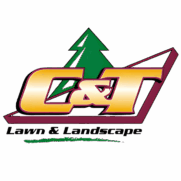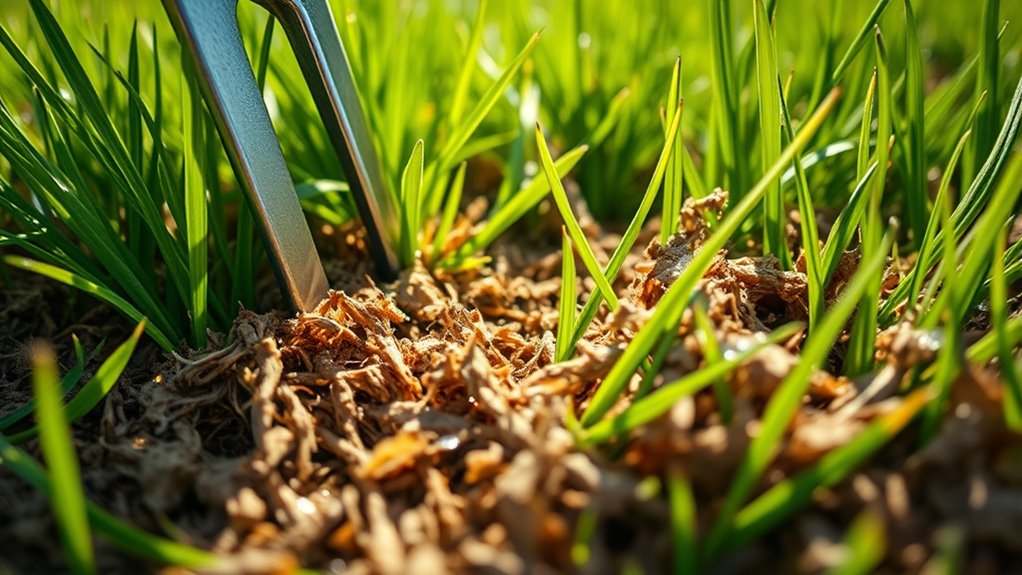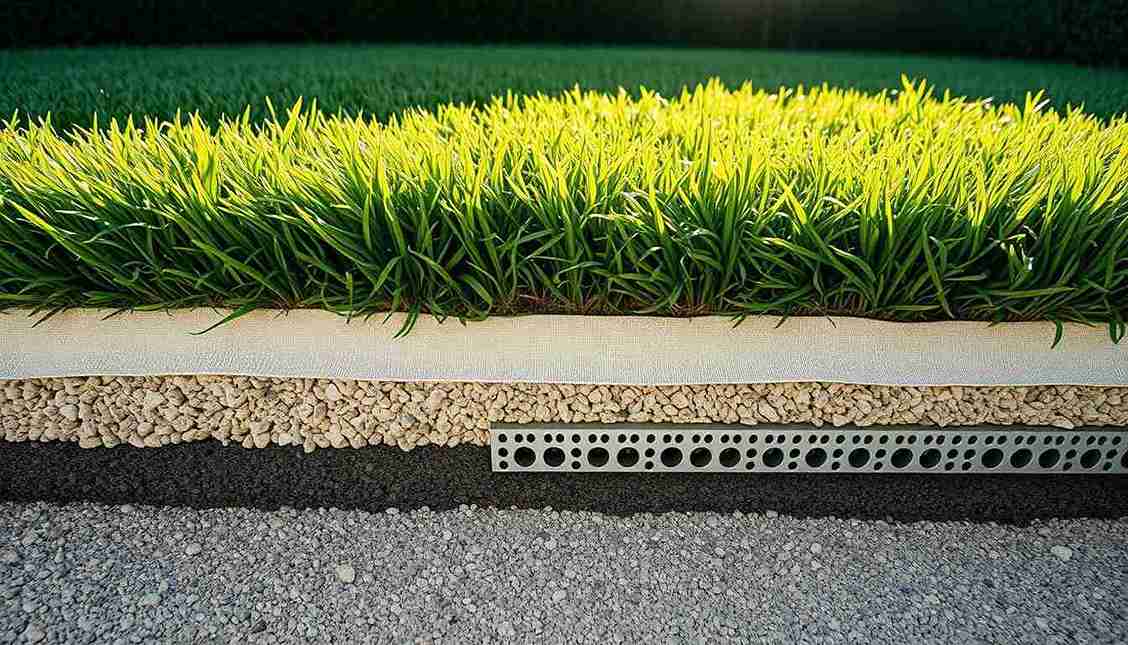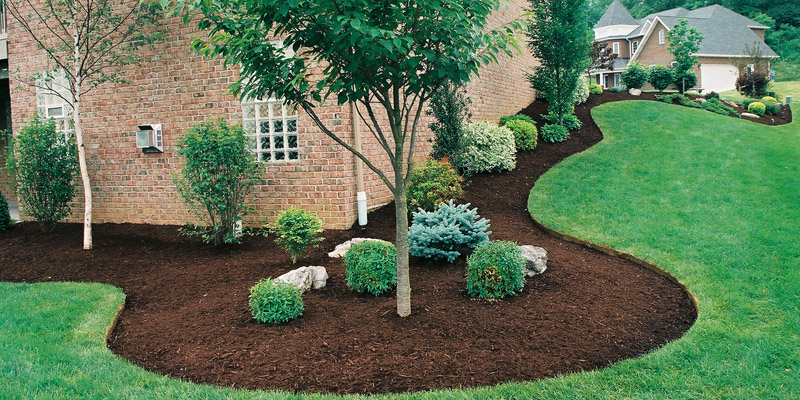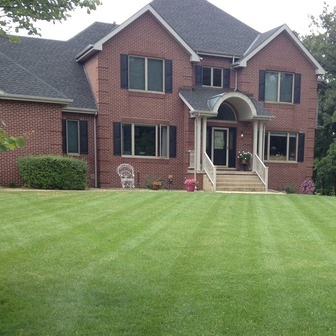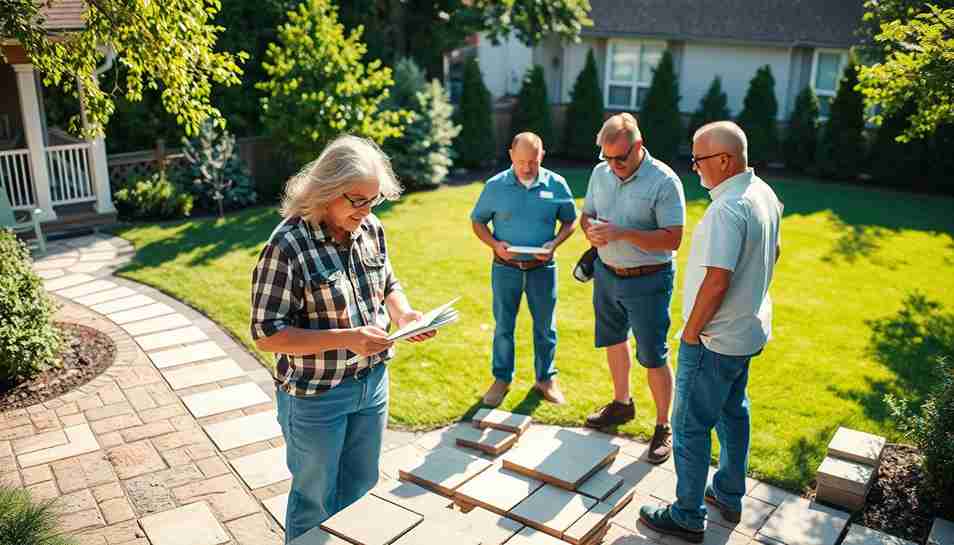Studies show that a well-planned landscape design can increase a home’s value by up to 15%. That’s a significant return on investment that starts with a great plan.
This guide provides the essential landscape design information to begin your project. We will walk you through every step to create a beautiful and functional outdoor space.

Our approach combines aesthetic appeal with practical needs. The goal is to create a personalized area that fits your lifestyle perfectly.
We cover planning fundamentals, plant selection, and key principles. You will learn how to design landscape front yard for your property, whether it’s a small yard or a large retreat.
Good planning creates spaces that evolve beautifully over time. With the right knowledge, transforming your home’s exterior is an achievable goal for any homeowner.
Laying the Groundwork for Your Outdoor Space
A detailed property sketch forms the foundation of any successful outdoor transformation. We begin with proper planning because it saves time and prevents costly mistakes later.
Sketching Your Property and Measuring Your Space
Start with a rough sketch of your entire property. Include permanent features like your house, sheds, and large trees you plan to keep.
Take this initial paper sketch outside with a tape measure. Record all measurements directly on your drawing.
Note the positions of windows, doors, and utility access points. This information helps plan traffic flow and placement of features.
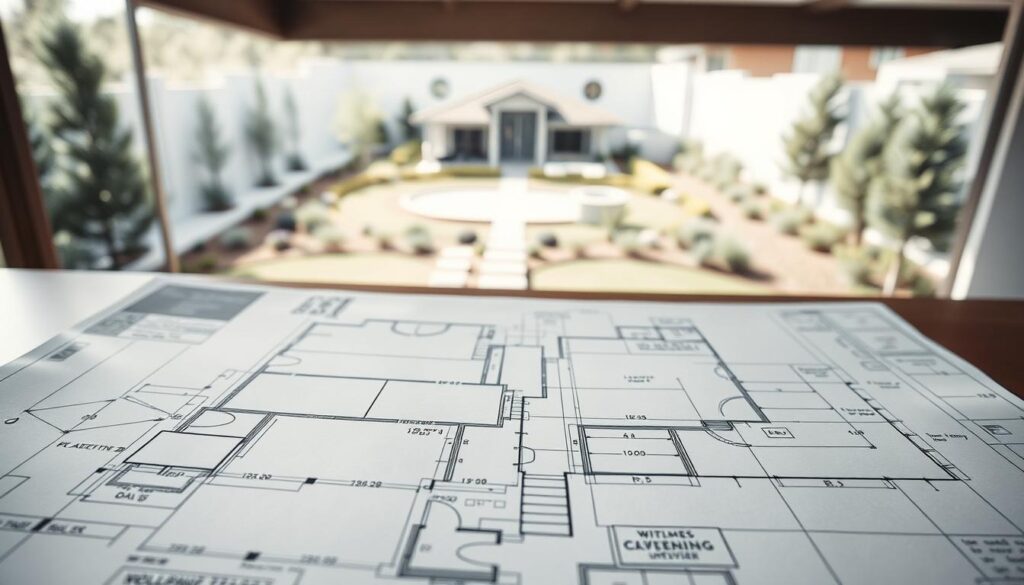
From Rough Drafts to Graph Paper: Building Your Master Plan
Transfer your rough sketch to graph paper using your measurements. This creates an accurate, scaled master plan.
Document environmental factors on this master copy. Note sun patterns, wind areas, and slopes that affect your design landscape choices.
Use tracing paper over your graph paper master to experiment with different layouts. This technique lets you try various landscape design ideas without altering your original plan.
This methodical approach ensures your final design landscape matches your property’s unique characteristics. Consider soil conditions and local codes during this planning phase.
Mastering Landscape Design: Essential Principles and Techniques
Great outdoor spaces don’t happen by accident; they are built on a foundation of proven principles. We will explore six core concepts that guide every successful project. These ideas help create a yard that feels both beautiful and intentional.
Understanding these principles is the key to a cohesive and functional garden design.
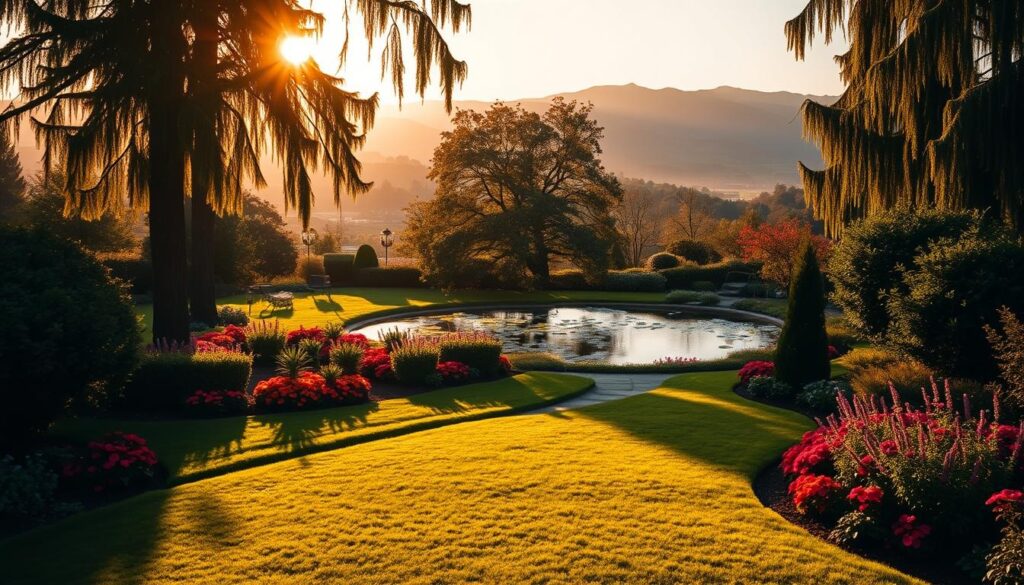
Understanding Proportion, Transition, and Unity
The first three principles shape the overall feel of your space. Proportion ensures elements are the right size for your property. A large stone wall might suit a big house but overwhelm a smaller one.
Transition creates smooth changes between areas. Using plants of graduated heights avoids jarring shifts. This makes the flow feel natural.
Unity, or harmony, is achieved when all parts complement each other. A clear theme ties everything together for a polished look.
Balancing Rhythm, Focalization, and Scale
The next set of principles guides how the eye moves through your landscaping. Rhythm uses repetition, like a row of shrubs, to lead the gaze.
Balance provides visual stability. This can be symmetrical or asymmetrical, giving the yard a settled feeling.
Focalization gently draws attention to a key feature. A specimen tree or water element can act as a natural centerpiece.
Developing a Unified Theme for a Harmonious Yard
These principles work through five key elements: color, form, texture, line, and scale. Your choices with these elements bring the principles to life.
A unified theme ensures all parts work together. This creates a harmonious and inviting outdoor environment you will love for years.
Designing for Your Unique Space and Needs
No two properties are exactly alike, which is why a one-size-fits-all approach to your yard simply doesn’t work. Your project’s success depends on tailoring landscape design ideas to fit your specific conditions.
We begin by analyzing the physical characteristics of your space. This ensures every choice is both beautiful and practical for your lifestyle.
Tailoring Ideas for Small Yards, Large Gardens, and Varied Zones
The size of your space is a primary driver of your plan. A compact front yard might use vertical structures and multi-purpose features.
Learning how to design backyard landscape layouts helps you make the most of your available space, whether it’s large or small. An expansive backyard landscape design can accommodate distinct areas for dining and recreation. Even a narrow side yard holds unique potential for a cozy retreat.
Each zone around your house serves a different purpose. Your backyard landscape design becomes your private oasis, while the front yard enhances curb appeal.
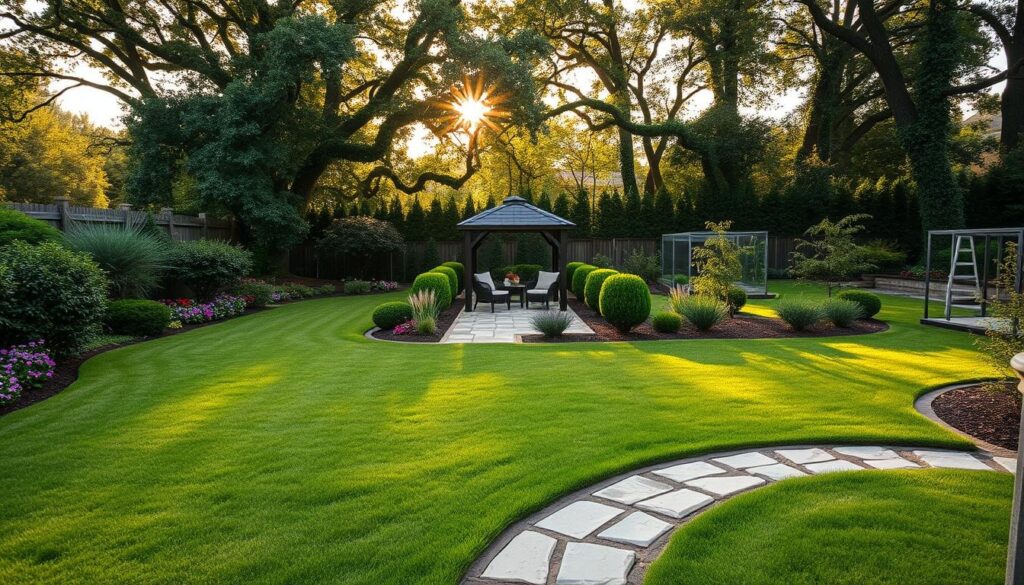
Adapting Your Design to Climate, Topography, and USDA Zones
Your local climate dictates which plants will thrive. The USDA Plant Hardiness Zone Map is an essential tool. It tells you your specific zone and which species are best suited for your area.
Topography also plays a major role. Slopes can be terraced to prevent erosion and create visual interest.
Consider these three basic landscape types and their needs:
- Mountain: Requires hardy plants for harsh weather and high altitudes.
- Flat: Features open exposure, needing plants that tolerate wind and drought.
- Coastal: Demands salt-tolerant and drought-resistant species.
Working with your property’s natural features leads to a sustainable outdoor space that requires less maintenance.
Enhancing Your Layout with Key Design Elements
Your outdoor area achieves its full potential through the strategic combination of built features and natural elements. We explore how to balance these components for maximum impact.
Incorporating Hardscape and Softscape Components
Hardscape elements include non-living features like stone pathways, patios, and retaining walls. These provide structure and define spaces within your yard.
Softscape components encompass all living elements such as lawns, flower beds, and ornamental shrubs. The interplay between these two creates a dynamic environment.
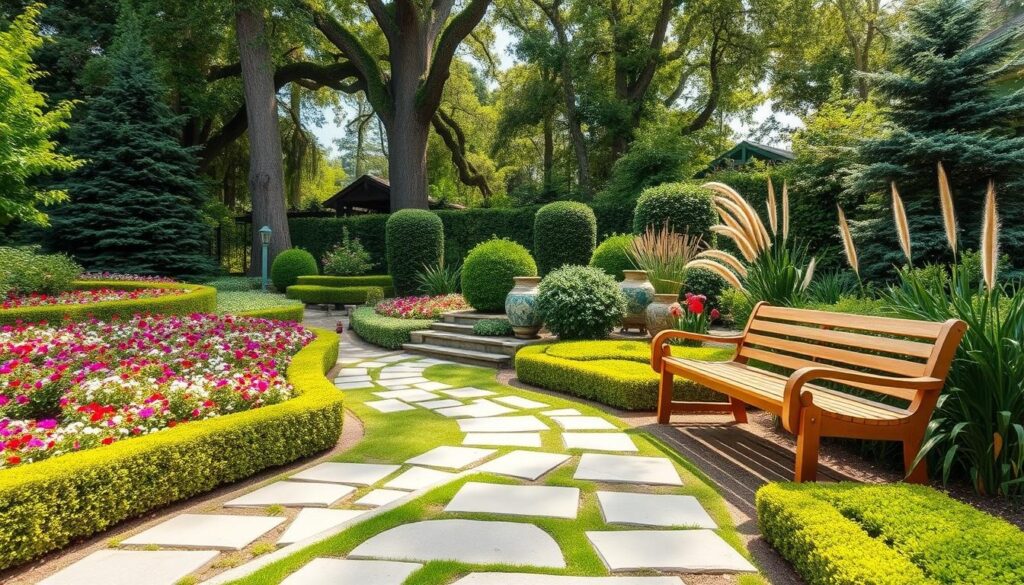
Creative Uses of Pathways, Water Features, and Lighting
Meandering pathways guide visitors through different garden zones. Water elements add movement and soothing sounds to your space.
Strategic lighting extends enjoyment into evening hours. It highlights key features and creates ambiance after sunset.
Mixing Color, Texture, and Form for Visual Impact
Color creates immediate visual interest through flowers and foliage. Warm and cool tones can produce contrast or harmony.
Texture comes from leaf size and plant surfaces. Fine-textured plants contrast beautifully with coarse varieties.
Form refers to plant shapes and branching patterns. Consider how each plant’s structure contributes to the overall composition.
Using Tools and Techniques for a Professional Finish
Digital tools now bridge the gap between DIY enthusiasm and professional expertise in outdoor planning. Modern software makes complex projects accessible to homeowners of all skill levels.
Exploring Digital Tools and DIY Landscape Software
We recommend several excellent software options for your projects. These platforms let you visualize ideas before making physical changes. You can experiment with layouts and plant placements safely.
For larger properties or business environments, commercial landscape design software provides advanced tools to plan functional and visually appealing outdoor spaces.
C&T Lawn and Landscape offers comprehensive services from consultations to complete remote plans. This provides flexibility for different budget levels and project needs, whether residential or commercial landscape design projects.
Professional design services typically cost depends on property size and complexity.
Homeowners often invest about 10% of their home’s value in outdoor improvements. A basic DIY project might cost around $2,600.
Hiring an expert designer averages $8,150 but brings valuable knowledge. Online design allows professionals to work remotely using photos and measurements.
Choose DIY for simple projects when you have time to learn. Hire an expert for complex installations or when you want guaranteed results.
Conclusion
Creating an outdoor sanctuary that reflects your personal style requires both vision and practical knowledge. This comprehensive approach combines artistic creativity with smart planning principles.
Your journey from initial sketches to a fully realized garden involves multiple thoughtful stages. Each step builds toward a space that serves your lifestyle perfectly.
The same core principles apply whether you’re working with a small yard or a large property. Your application will vary based on climate, topography, and personal preferences.
Remember that gardens are living spaces that evolve over time. This ongoing relationship with your outdoor area allows for continuous refinement as plants mature.
Use the expert guidance throughout this guide as your foundation. Start by sketching your property and identifying your goals. Even ambitious projects become achievable when broken into manageable steps.
Your investment in thoughtful planning creates lasting value and daily enjoyment for years to come.
Ready to transform your outdoor space?
Get expert landscape design guidance and see how we can bring your vision to life. Visit us today or explore our location.
